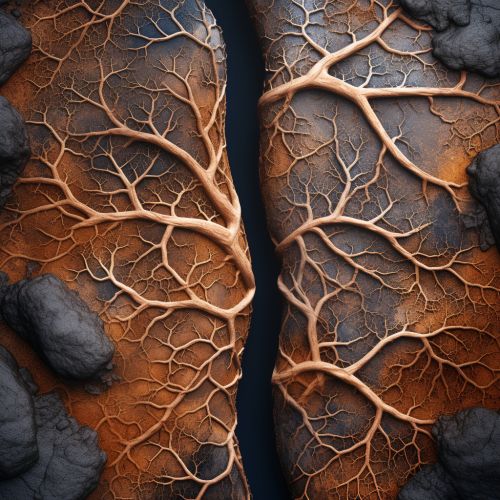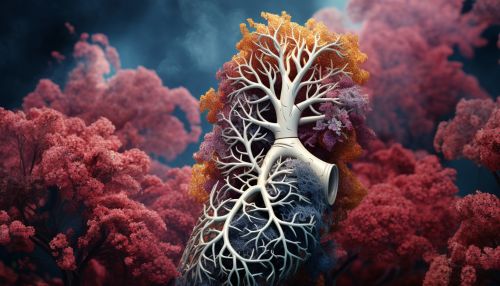Lung
Anatomy of the Lung
The lung is a vital organ in the human body, responsible for the process of respiration. It is a part of the respiratory system, which also includes the trachea, bronchi, and diaphragm. The lungs are located in the thoracic cavity, protected by the rib cage and the sternum.


The human body typically has two lungs, the right lung and the left lung. The right lung is slightly larger and is divided into three lobes: the superior, middle, and inferior lobes. The left lung, on the other hand, has only two lobes: the superior and inferior lobes. This difference in structure is due to the space occupied by the heart on the left side of the chest.
Each lung is enveloped by a two-layered serous membrane known as the pleura. The outer layer, or parietal pleura, is attached to the chest wall, while the inner layer, or visceral pleura, covers the lungs themselves. Between these two layers is a thin space known as the pleural cavity, which contains a small amount of lubricating fluid that allows the lungs to expand and contract smoothly during respiration.
Physiology of the Lung
The primary function of the lungs is to facilitate the exchange of gases between the air we breathe and the blood. This process, known as gas exchange, involves the intake of oxygen and the expulsion of carbon dioxide.
During inhalation, air enters the body through the nose or mouth, travels down the trachea, and then into the bronchi and bronchioles, which are small airways within the lungs. These airways lead to tiny air sacs called alveoli, where gas exchange occurs.
The walls of the alveoli are extremely thin and are surrounded by a network of tiny blood vessels, or capillaries. Oxygen from the inhaled air diffuses across the alveolar walls and into the blood in the capillaries, where it binds to hemoglobin in red blood cells. At the same time, carbon dioxide, a waste product of cellular metabolism, diffuses from the blood into the alveoli and is expelled from the body during exhalation.
Diseases and Conditions
There are numerous diseases and conditions that can affect the lungs, including chronic obstructive pulmonary disease (COPD), asthma, pneumonia, tuberculosis, and lung cancer.
COPD, which includes conditions such as emphysema and chronic bronchitis, is characterized by long-term, progressive damage to the lungs that causes difficulty breathing. Asthma is a chronic condition in which the airways become inflamed and narrowed, leading to episodes of wheezing, coughing, and shortness of breath.
Pneumonia is an infection that inflames the air sacs in one or both lungs, which may fill with fluid or pus. Tuberculosis is a serious bacterial infection that primarily affects the lungs and can spread to other parts of the body. Lung cancer, the leading cause of cancer-related deaths worldwide, involves the uncontrolled growth of abnormal cells in one or both lungs.
